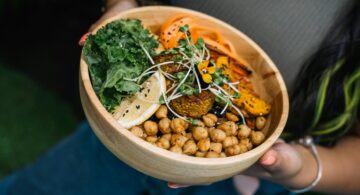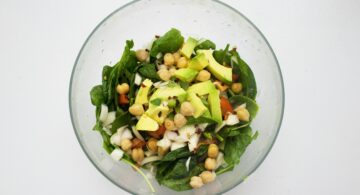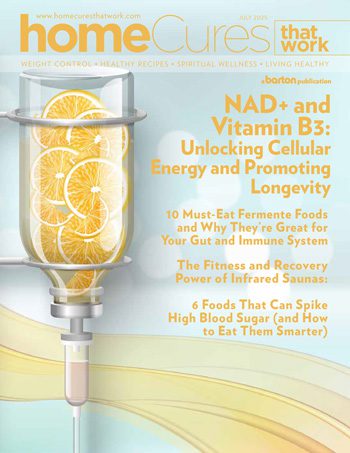Eating For Maximum Nutrition
Do you consider yourself to be a healthy eater? Maybe you’re one that piles your plate high with vegetables and avoids drive-thrus like the plague. Surely you are getting all the vitamins and minerals that your body needs, right? Unfortunately, that likely isn’t the case. It’s not necessarily your fault either. Even if you’re making extremely healthy food choices, it is very difficult to get the sufficient nutrients you need strictly from food.
Why can’t we just rely on the food we eat to give us what we lack? It is because the availability of getting adequate nutrition from foods alone has become more and more difficult. Yes, there are those who don’t eat well and live off processed and fast foods. It is expected that those choices would cause nutrient declines. However, it is disheartening to know that even those who make a conscious effort to eat well may also suffer from a lack of vitamins and minerals.
- Pregnant women are encouraged to take prenatal vitamins
- Thousands get a vitamin B12 shot every month
- Vitamin D and calcium supplements are now recommended to patients with bone issues.
So, what happened to our food? Why doesn’t nature offer all we need?
The Nutrient Decline in Foods
The answer to the decline in nutrition lies in the food itself, not necessarily the one consuming it. In the 1980s, there began to be a concern about the decline of nutrients in our foods. Commercial farming was taking over the food industry and pest resistance, transportability, and yield began to take precedence over nutrient content.
Researchers at the University of Texas found a significant decline in the nutrients in 43 different crops from the years 1950 to 1999. The greatest declines were found in protein, phosphorus, iron, vitamin B2, and vitamin C available in our foods. Given that another 15 years have passed since that study, I can only guess that nutrients have declined even further.(1)
Theories as to why nutrients have declined so dramatically are:
- Soil depletion from years of farming has led to nutrient depletion in crops.
- The seeds themselves, if commercially produced or genetically modified, may produce crops lacking in nutrients.
Getting the Most from Your Food
Because of the decline in nutrients, you would need to consume around 50% more food to get the same nutrition! It is often hard enough to eat your recommended daily allowance of fruits and vegetables the way it is! However, there are ways to beat the system and incorporate higher nutrient foods into your diet again.
Avoiding GMOs
Genetically modified foods are praised for their ability to resist pests and increase yield. Scientists boast that we can now produce more food to help feed the starving people all across the world. However, inside GMO foods some alarming secrets are hidden in the dark. Not only do many GMO foods contain far less vitamins and minerals, but many also cause food allergies and intolerances. This is because our bodies don’t recognize these genetically modified organisms as real food…and rightly so! Genetically incorporated pesticides contained in the crops can also damage the body, specifically the lining of the intestinal tract.
Nutrients in GMO foods are lacking compared to their natural forms. For example, a study performed on the nutrient values of GMO vs. Non-GMO corn presented some very disturbing results. The studies results concluded:- Non-GMO corn contains 437 times more calcium than GMO corn
- Non-GMO corn contains 56 times more magnesium than GMO corn
- Non-GMO corn contains 7 times more manganese than GMO corn
These are just the largest inconsistencies found. Many other vitamins and minerals were found to be lacking in GMO corn.
The GMO corn also contained levels of glyphosate and formaldehyde that exceed toxicity standards for humans. Non-GMO corn contained neither of these chemicals.
The first step in avoiding GMO foods is to know where to find them. Because there isn’t a required label on GMO products, it can be quite the guessing game. However, there are several common GMO foods you should always keep an eye out for.
The most common GMO foods on the market are:
- Soy
- Corn
- Sugar from sugar beets
- Papaya
- Canola
- Zucchini and yellow squash
Unless a label specifies non-GMO or organic, and it contains one of the above foods, you can pretty much count on it being genetically modified. It may take a bit to get the hang of it, but always read labels and keep your eyes peeled for these GMO foods! I personally make a point to choose organic versions of these foods or avoid them all together. I don’t want myself or my family to become a science experiment on what GMOs can do to the human body.
I firmly believe that genetically modified foods are not fit for human consumption. Click to Tweet.
Though GMO foods are celebrated as a scientific breakthrough, I view them as a poor replacement for true nutrition. It’s like replacing a loaf of whole wheat bread with cardboard and celebrating how much easier it was to prepare! I like to think God knew what he was doing when he designed our plants and animals. There is truly nothing better than the God-given natural foods that are unaltered and unmodified.
Eating Heirlooms
Many people talk about eating organic foods, but their is another fantastic type of produce that is nutrient dense and 100% natural. These types of plants are called heirlooms. Eating heirloom produce can insure that you’re getting a seed that has not been commercially produced or genetically modified. Heirloom seeds have been passed down for hundreds of generations. It’s really quite fascinating to think about. Down to the genetic makeup, you could be eating the same exact kind of tomato that your great great grandmother grew in her garden!
Heirlooms often have different colors and shapes than the typical produce you see at your grocery store. They often boast a richer flavor, as well. It can be a lot of fun taste testing all the different varieties.
Heirlooms can be difficult to find at a local grocery store, but your local farmer’s market should have many to choose from. And you can always grow heirloom vegetables yourself. Even if you don’t have room for a garden, you can purchase a couple large pots and place them outside on a deck or patio.
If you choose to grow your own vegetables, an easy way to boost nutrients in your garden is to practice composting. This offers a huge boost of natural nutrients to your soil and, therefore, the plants that grow in that soil.
If you don’t want to grow your garden, be sure and ask about the farming practices of your local farmers. Let them know that you are concerned about the amount of vitamins and minerals contained in your foods. Most small farmers will be happy to answer your questions.
Nutrient Dense Foods
Naturally, some foods have more nutrients than others. Even vegetables are not all created equal. A bowl of iceberg lettuce, although a vegetable, is not much more than water and fiber. The best foods to choose have the most nutrition per calorie, such as:
- Colorful vegetables
- Legumes
- Fruits
- Whole grains
- Nuts
- Quality farm raised meat
- Free-range eggs
- Raw or organic dairy
Stay away from processed foods, desserts, and fried foods. They offer little nutrition and pack a lot of empty calories.
Many of these nutrient dense foods are also referred to as “super foods.” For more on superfoods, check out this issue of Home Cures That Work.
A great way to incorporate more nutrient foods into your meals is to replace refined ingredients with vegetables! A great example is this recipe for lasagna! This lasagna uses zucchini in place of noodles and is packed full of other vegetables! I love one-dish meals and this recipe is a fantastic edition to your family dinner!
Noodle-Free Vegetable Lasagna*
Ingredients:
Sauce
- 1 ¼ lb lean ground beef or turkey
- 1 onion diced
- 2 cups of fresh or frozen broccoli
- 2 cups of fresh or frozen cauliflower
- 2 cups fresh or frozen spinach
- 1 25 oz jar of organic spaghetti sauce
- 1 tbsp garlic powder
- Salt and pepper to taste
Cheese Layer
- 1 16 oz container of cottage or ricotta cheese
- ½ cup grated Parmesan cheese
- ¾ cup mozzarella cheese
Noodles Directions:
Preheat oven to 425 degrees. Spray a cookie sheet with non-stick cooking spray, then arrange zucchini slices and season with salt and pepper. Bake zucchini slices for 5 minutes on each side. Remove from oven. Set zucchini slices aside and lower oven temperature to 375 degrees.
Meat Sauce Directions:
In a large non-stick skillet, cook meat until it’s browned. To the skillet, add the veggies, seasonings, and the entire jar of spaghetti sauce. Simmer for about 10 minutes, (or until veggies are de-thawed/begin to soften), stirring occasionally.
Cheese Layer Directions:
Mix the cottage cheese and Parmesan cheese together.
Putting it all together:
Begin by spreading 1/3 of the meat sauce in the bottom of the pan. Follow meat sauce with a layer of zucchini slices, followed by a layer of cottage cheese. Repeat the layers until casserole dish is full. Sprinkle the mozzarella evenly over the top. Cover with foil and bake at 375 degrees for 1 hour. Remove foil and bake or broil another 5-10 minutes until cheese is browned. Remove from oven and let rest for about 10 minutes before slicing, and serve warm!
I’m a sucker for good ethnic food. I love the flavors, the colors, and the wonderful aromas. This twist on a typical goulash mixes beautiful, nutrient rich vegetables with the rich flavor of curry.
Thai Curry Goulash
Ingredients
- 1 red onion, chopped
- 2 cloves garlic diced
- 2 red bell peppers diced
- 1 cup mushrooms
- 2 heirloom tomatoes diced
- 2 carrots shredded
- Cabbage (used half a small head diced)
- 1 can of coconut milk
- 1 tbsp red curry paste
- 3 cups diced chicken
- 1 tbsp arrowroot powder
- Fish Sauce to taste
Directions:
The beauty of this dish is you can use whatever vegetables you have on hand. Use this opportunity to clean out your fridge and eat up all your unused produce!
Begin by sautéing the veggies in a teaspoon of butter, starting with the onion and working down the list.
When all the veggies are soft, pour in the coconut milk and dissolve about a tablespoon of red curry paste into the developing sauce.
Add chicken to the pan. Next mix about a tablespoon of arrowroot with about a 1/4 cup of cool water then gently poured the white liquid into the pan to thicken the sauce. Lastly, add fish sauce to taste.
Serve over brown rice or enjoy alone.
The difficulty in obtaining all your daily nutrients from the foods you eat should not discourage you from eating healthy. It is still very important to get all that you can from your diet.
Begin avoiding GMO foods and replace them with heirlooms and organics. Also fill your diet with wonderful nutrient dense foods and toss out those processed foods and sweets. You will feel better, look better, and have energy levels that only come from complete nutrition.
What about you? Do you feel you get adequate nutrition from what you eat on a daily basis?



























